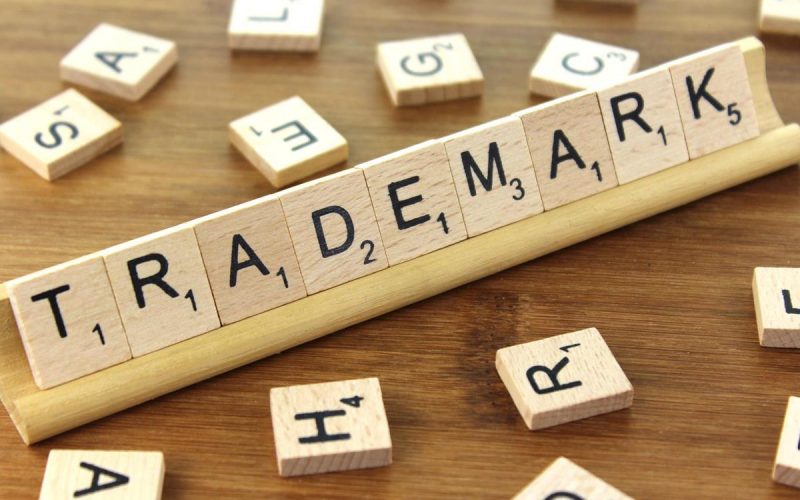Nowadays, trademarks have become identical to a business name, so that you won’t need to see the name to identify a particular brand. For example, the apple shape with the bite taken out that Apple uses as its logo.
The heart of your brand identity is your business name. Therefore, registering a trademark for your business will help protect your brand and establish your company as a viable competitor.
In this post, we will be talking about the cost of, and how to trademark your business name. Also, if you’re wondering “Do I Need to Trademark My Business Name?”, This post will explain why you should and also the cheapest way to trademark name yourself free of stress.
What Is a Business Trademark?
A trademark, therefore, is a unique symbol or term that is used to describe a business name or its products. Once licensed, the sign or set of words cannot be used by any other company for as long as it prevails and appropriate documentation and fees are paid.
To claim strength and protection from copycats, businesses must apply for a trademark and acquire ownership confirmation from the US Patent and Trademark Office.
Furthermore, trademarks can be applied to company names, logos, and product labels. Although you might legally use the term “service mark” instead of “trademark” if your company provides services rather than items. Most people use the term “trademark” when discussing both services and goods.
The major significance of a trademark name is the correlation of symbols and words with a business and its brands. When a customer sees a familiar logo, they recognize it right away, which can lead to preference and, ultimately, sales.
Need To Trademark Your Business Name
Although you don’t need to trademark your name to begin operations, it’s a good idea to protect your business for one reason. One of the many reasons that you may need to trademark your business name is simply for protection against infringement. You can register your business name in all 50 states as well as other countries with a federal trademark.
Also, you can sue in federal court to protect your branding if your name is federally trademarked. Mostly, suits allow you to collect monetary damages or even file criminal charges against anyone who attempts to use your company’s name. By using a similar name, you’ll also ensure that you’re not infringing on someone else’s trademark.
If you want to secure your company’s identity completely, you’ll need to trademark the business name and the logo separately. If you can only afford one, anyway, you should certainly register your company name. It’s considerably easier to modify your logo than it is to change your company name. Furthermore, trademarking your name gives you more protection than merely trademarking your logo.
The need to trademark your business name is listed thus:
- Protection in all 50 states by federal registration, which also comes with extra benefits
- Proof of ownership “prima facie” (courts accept your ownership without further proof)
- An entry in the USPTO’s web database
- The right to use the ® mark in conjunction with your company name. Even if you don’t utilize the ® symbol, there is public notice of the trademark, so an infringer can’t claim they didn’t know about it.
- If you’ve used the trademark symbol “®” on your business name and someone else uses it, you’re free to sue in Federal Court for monetary damages and attorney’s fees.
- The right to register a trademark with the United States Customs and Border Protection Service to prevent counterfeit goods from entering the country.
- The ability to register your company name in other nations
Various Stages To Trademark a Business Name
#1. Name Choice
Mostly, common or generic trademark terms don’t qualify to be registered as a business name. You won’t be able to trademark a name that is confusingly similar to someone else’s, especially if the identical business name is owned by a competitor.
#2. Trademark Search
The PTSO’s Trademark Electronic Search System allows you to look for companies with names that are similar to yours. Here, you pay your attorney $300 or more to search the database for you, otherwise, hire a company to do it for you.
If you’re doing it yourself, look for every potential variation of your name. Your application will be denied if you miss something that the PTSO considers a close match, and you’d lose the fees. We shall discuss how to trademark your business name yourself, at the cheapest rate and free of stress later on.
#3. Trademark Application
The USPTO offers 45 various business classes, such as “apparel” and “undertaking”. For each type of business you operate, you’ll need to apply. On the other hand, Electronic applications are preferred by the USPTO, which accepts them through the TEAS system at www.uspto.gov. Whereas Commissioner for Trademarks, P.O. Box 1451, Alexandria, VA 22313-1451, is the address for paper applications.
#4. Examining Attorney
Since you need the help of an attorney to trademark your business, he or she’d look over your application to see if it fits all of the requirements. The Trademark Act of 1946, 15 U.S.C. 10501 et seq., and the Trademark Rules of Practice, 37 C.F.R. Part 2, are used by the examining attorney to examine your application. Indeed, this stage takes a long time.
Furthermore, if the examining attorney encounters any concerns with your application, they’d send you or your attorney an “office action” requesting that you or your attorney remedy the issues.
Lastly, your business name will be put up for “check” if your application passes the examination granting anyone with a similar name to file a trademark infringement complaint against you. However, your newly trademarked name will be listed on either the Primary or Supplemental Register if no one objects.
#5. Maintain Renewal
You’d submit a “Declaration of Continued Use” along with documentation that you’re still using the business name after five years. This file will set you back $100. After nine years, you must renew your trademark, which costs $400-$500 for each class of goods/services.
#6. Trademark Watch
This stage involves being on the watch for future infringement. Of course, your lawyer or company can set up a “trademark watch” for you that will alert you if someone else attempts to trademark a business name that is too similar to yours. After that, you can choose whether to submit a cease and desist letter or file a lawsuit.
Cost To Trademark a Business Name
The cost of filing a trademark for your business name with the US Patent and Trademark Office (USPTO) ranges from $225 to $600, including legal fees. However, you can register with most states for $50-$150 if you don’t want protection outside your state.
Trademark protection protects the designs, symbols, words, or phrases that distinguish your business as a supplier of goods or services from those offered by competitors.
On the other hand, if you’re yet to start doing business under the name you want to trademark, there will be some additional stages and cost in the filing. The USPTO will send you a notice about 12 weeks after you submit your application. You then have six months to file a Statement of Use (for a cost of $100) along with proof that you’re using the business name, otherwise, you can request a six-month extension. But, if you hire an attorney, you’ll have to pay legal fees of $250 to $700 to have the statement ready and proof that you’re using the name.
Cheapest Way To Trademark Your Business Name
You can effectively trademark your business name in the cheapest way possible if you decide to. Hence, you don’t have to engage someone else to trademark your business name if you decide to register it yourself without the help of an attorney. Cut out the middleman and go straight to the source.
While this may not be a bit of legal advice, it’s worth noting that the Federal body in charge of issuing a trademark for a business name has everything you need at the cheapest rate if not free.
Steps To Trademark Your Business Name for Free
To carry out the trademark registration of your business name yourself and free of stress, here are some steps to get you started:
- Examine Trademark basics for new filers to learn what you need to know.
- Review the Trademark Electronic Search System (TESS) to ensure that the trademark you chose isn’t currently in use.
- Select the class for which you will file, select your payment method and ensure you have your specimen document. Furthermore, have a sample of the trademark in use, such as a photo of your product ready to upload to prove your use of the trademarked term.
- When you’re ready, go to the Trademark Electronic Application System (TEAS), an official US government entity, to file your trademark application online.
- Wait, and make sure to check your email (and spam filters) in case you need to follow up. Also. you’d have to wait six to nine months for your TM certificate to come in the mail, assuming there are no severe issues.
Relevant Tips On Cost to Trademark a Business Name
Each year, 50–80 percent of trademark filings are rejected on the first try, because the papers aren’t filled out correctly. Or the filer didn’t conduct a thorough search to determine if anyone else is using their name.
Furthermore, some bargain legal sites charge a cost fee of $400–$500 for trademark name services. This charge is exclusively for assisting you with your application. It may or may not include a search and does not include any support if your application is rejected.
Typical legal expenses incurred by an expert trademark attorney range from $1000 to $2000. The standard length of time it takes to fully finish a trademark filing is six months to three years.
Cheapest Mistakes in Trademark Business Name Registration
- Choosing an attorney with no prior experience with trademarks
- Not conducting enough research to ensure that your company name isn’t too similar to someone else’s.
- Not filing under the correct business classification Not filing under more than one business classification if you have many business activities
- You can trademark your logo but not your company name.
- Attempting to register a business name that the USPTO deems too generic, such as “fine dining” or “used cars.”
- Using the suffix to trademark your URL. For instance, if your website is Meekevergreen.com, you should equally register Meek Evergreen as your business name to broaden your protection.
Who is eligible for a trademark?
A trademark must satisfy two fundamental criteria in order to be protected: it must be unique and in use in commerce. The first requirement, that a mark be used in commerce, results from the constitutional foundation of trademark law in the authority of Congress to regulate interstate commerce.
Should my LLC own my trademark?
There is a proprietor of every trademark, who may be an individual or an LLC (or other business entity). A trademark’s user determines who owns the rights to the mark. Before submitting the application, the LLC must already exist if you intend to create one to run your business under that trademark.
Do I need a copyright if I have a trademark?
You are not required to register the copyright for and trademark your business’ name or logo. In the US, you acquire a copyright as soon as your original work is saved to a piece of paper or computer drive, and you acquire a trademark as soon as you use your company name and logo to promote your enterprise.
How long is a trademark good for?
Trademarks do not lose their validity after a certain amount of time, unlike patents and copyrights. As long as the trademark is used by its owner, it will remain in existence. A registered trademark must be used in regular commerce after it has been granted by the United States Patent and Trademark Office (USPTO).
Do you have to pay taxes on a trademark?
Report the revenue from the trademark sale on your tax return. Although you cannot write off the cost of developing your trademark, you can include it in the calculation of your “income tax basis,” which serves as the benchmark for calculating tax liability on sales and depreciation deductions.
Which is better, a trademark or LLC?
Incorporating a limited liability company is the first step in starting a business, and trademarks are the next. Both are essential and play a part in your company. Due to the fact that an LLC only provides local protection, the protection it provides for brands is constrained.
- CHEAPEST & FREE PAYROLL SERVICES FOR SMALL BUSINESS 2023 (Updated)
- 1096 Form Instructions: Everything You Need To Know
- Intangible Property: What Is Intangible Property (+ Practical Examples)
- FORECLOSURE ATTORNEY: Overview and Fees (Updated!)
- LIVING TRUST: Overview, Cost, Templates, Pros & Cons (+Writing Guide)
FAQs On How to Trademark a Name
How Do I Trademark My Small Business Name?
Registering a trademark for a company name is pretty straightforward. Many businesses can file an application online in less than 90 minutes, without a lawyer’s help. However, the simplest way to register is on the U.S. Patent and Trademark Office’s Web site, www.uspto.gov.
How Do I Protect My Brand Name
- Register your domain name. Domain names are an important part of any business brand today. …
- Trademark your business name and logo. …
- Use your brand. …
- Monitor your brand. …
- Deal with infringement immediately.
Should I Trademark My Business Before Forming My LLC?
In many circumstances, a company will wish to begin the trademark application process as soon as they complete their LLC or corporation paperwork. You can, however, ensure that your name is secure after you begin commercial sales by filing for a trademark before your debut. There may be a more compelling incentive to apply early, though
How Long Does a Trademark Last?
In the United States, for example, a federal trademark can potentially last forever, but it has to be renewed every ten years. If the mark is still being used between the 5th and the 6th year after it was registered, then the registration can be renewed.
Do I Have to Trademark my Logo?
You should consider registering Trademarks to protect any features that you use to identify your brand. Many businesses register a number of Trademarks, for example, one to protect their brand name, another to protect their logo and another one to protect a tagline
{
“@context”: “https://schema.org”,
“@type”: “FAQPage”,
“mainEntity”: [
{
“@type”: “Question”,
“name”: “How Do I Trademark My Small Business Name?”,
“acceptedAnswer”: {
“@type”: “Answer”,
“text”: “
Registering a trademark for a company name is pretty straightforward. Many businesses can file an application online in less than 90 minutes, without a lawyer’s help. However, the simplest way to register is on the U.S. Patent and Trademark Office’s Web site, www.uspto.gov.
“
}
}
, {
“@type”: “Question”,
“name”: “How Do I Protect My Brand Name”,
“acceptedAnswer”: {
“@type”: “Answer”,
“text”: “
- Register your domain name. Domain names are an important part of any business brand today. …
- Trademark your business name and logo. …
- Use your brand. …
- Monitor your brand. …
- Deal with infringement immediately.
“
}
}
, {
“@type”: “Question”,
“name”: “Should I Trademark My Business Before Forming My LLC?”,
“acceptedAnswer”: {
“@type”: “Answer”,
“text”: “
In many circumstances, a company will wish to begin the trademark application process as soon as they complete their LLC or corporation paperwork. You can, however, ensure that your name is secure after you begin commercial sales by filing for a trademark before your debut. There may be a more compelling incentive to apply early, though
“
}
}
, {
“@type”: “Question”,
“name”: “How Long Does a Trademark Last?”,
“acceptedAnswer”: {
“@type”: “Answer”,
“text”: “
In the United States, for example, a federal trademark can potentially last forever, but it has to be renewed every ten years. If the mark is still being used between the 5th and the 6th year after it was registered, then the registration can be renewed.
“
}
}
, {
“@type”: “Question”,
“name”: “Do I Have to Trademark my Logo?”,
“acceptedAnswer”: {
“@type”: “Answer”,
“text”: “
You should consider registering Trademarks to protect any features that you use to identify your brand. Many businesses register a number of Trademarks, for example, one to protect their brand name, another to protect their logo and another one to protect a tagline
“
}
}
]
}






